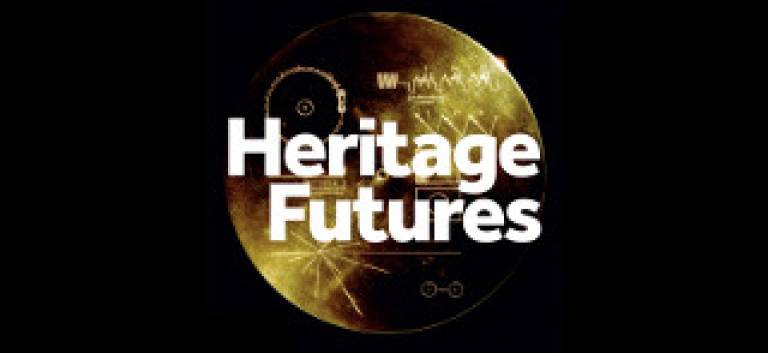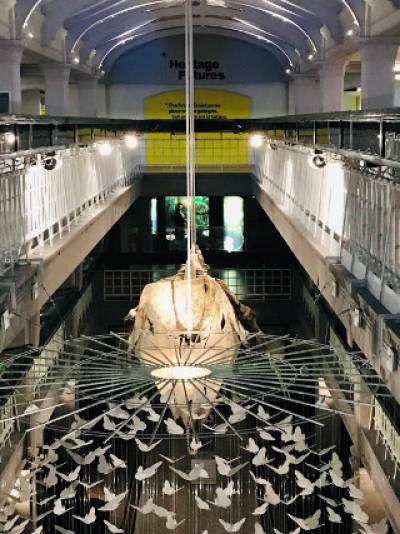Heritage Futures exhibition launched at the Manchester Museum
17 December 2018
The Heritage Futures exhibition, an outcome of the 4-year, AHRC-funded, Heritage Futures Research Programme directed by Rodney Harrison, Professor of Heritage Studies and AHRC Heritage Priority Area Leadership Fellow, was launched at the Manchester Museum on 13 December.

The exhibition was opened by Professor Esme Ward, Director of the Manchester Museum, Professor Roey Sweet, Director of Partnerships and Engagement at the Arts and Humanities Research Council (AHRC), and Rodney, at a private view event attended by several hundred people, including many of the research programme's 15 academic researchers and members of the project's 28 international partner organisations.

Curated by Henry McGhie (Head of Collections and Curator of Zoology at the Manchester Museum), and Rodney Harrison, in consultation with the Heritage Futures research team, the exhibition explores the relationship between heritage, waste, loss, and how the concept of heritage can be used to involve people in actively imagining and beginning to create the future they desire for themselves and others. It not only presents aspects of the academic research and the four main themes of the Heritage Futures research programme, but also utilises these themes to re-imagine the museum and its collections.
In addition to research materials, photographs, films produced by project researchers and interactive artworks inspired by "the Polar Tombola" by Nancy Campbell and "the Human Bower" by Shelley Castle from Encounters Arts, some of the 'star' exhibits include:
- A Herdwick Sheep, a breed of domestic sheep 'native' to the Lake District of Cumbria in North West England
- Tiles produced by the Heritage Futures team for the 1 million year Memory of Mankind archive in Austria
- A replica of the Golden Record that was sent on board the Voyager spacecraft in 1978,and which has now left the solar system with messages to other civilisations
- Recently discovered species of insect, found in the Museum collection;
- A Wandering Albatross, the bird with the greatest wingspan of any living bird, reaching up to 3.5 metres (11.5 feet)
- Seeds from the Svalbard Global Seed Vault
The exhibition will be accompanied by a Heritage Futures 'workspace', an adjacent gallery exhibiting local projects that demonstrate the themes of the project, and that provide opportunities for people to imagine, express, plan for and begin to create their own collective desired futures. The exhibition will run for two years, until Autumn 2021, and forms the centrepiece of the museum's major two year redevelopment programme hello future.
Further information
- Heritage Futures Exhibition - Manchester Museum website
- Heritage Futures Research Programme
- AHRC Heritage Priority Research Area
 Close
Close

